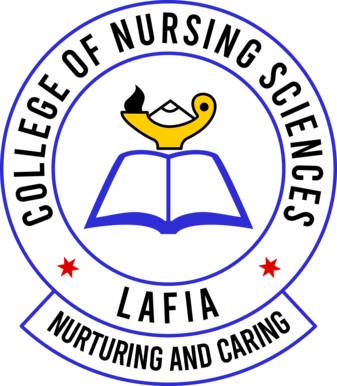Chemistry Keypoints; Kinetic theory of matter and Gas Laws; Chemistry is the study of matter and its properties. Understanding the behavior of matter is essential in order to comprehend how chemicals react and interact with each other. The kinetic theory of matter is an important concept that explains the behavior of matter based on the movement of its particles. It is the foundation for understanding gas laws which help to explain the behavior of gases in different situations.
Study other chemistry keypoints here
Chemistry Keypoints; Kinetic theory of matter and Gas Laws
(a) An Outline of the Kinetic Theory of Matter:
The kinetic theory of matter is based on the idea that all matter is made up of tiny particles that are in constant motion. This motion is due to the kinetic energy of the particles. The behavior of matter, such as melting, vapourization, boiling, freezing, and condensation, can be explained in terms of molecular motion and Brownian movement.
(i) Melting: When a solid is heated, the kinetic energy of its particles increases, causing them to vibrate more vigorously. This causes the bonds between the particles to weaken and eventually break, resulting in the solid melting and turning into a liquid.
(ii) Vapourization: When a liquid is heated, the kinetic energy of its particles increases, causing them to move faster and eventually break the intermolecular forces between them. This results in the liquid turning into a gas.
(iii) Boiling: Boiling is the rapid vaporization of a liquid that occurs when the vapor pressure of the liquid equals the atmospheric pressure. This occurs when the temperature of the liquid is increased, increasing the kinetic energy of the particles until they are able to overcome the intermolecular forces holding them together.
(iv) Freezing: Freezing is the opposite of melting. When a liquid is cooled, the kinetic energy of its particles decreases, causing them to move more slowly and eventually form bonds with each other, resulting in the liquid turning into a solid.
(v) Condensation: Condensation occurs when a gas is cooled, causing the kinetic energy of its particles to decrease, allowing them to form bonds with each other, resulting in the gas turning into a liquid. This can be observed in the formation of dew on a cold morning.
(b) Gas Laws:
The behavior of gases can be explained by a set of laws known as gas laws. These laws describe the behavior of gases in terms of pressure, volume, temperature, and the number of particles present.
(i) The Laws of Boyle, Charles, Graham, and Dalton:
- Boyle’s Law: At a constant temperature, the volume of a gas is inversely proportional to its pressure. This can be expressed as PV = k, where P is the pressure, V is the volume, and k is a constant.
- Charles’s Law: At constant pressure, the volume of a gas is directly proportional to its temperature. This can be expressed as V/T = k, where V is the volume, T is the temperature, and k is a constant.
- Graham’s Law: The rate of effusion (the escape of gas particles through a tiny hole) of a gas is inversely proportional to the square root of its molar mass.
- Dalton’s Law of Partial Pressure: The total pressure of a mixture of gases is equal to the sum of the partial pressures of the individual gases.
(ii) The Ideal Gas Equation:
The ideal gas equation is a combination of Boyle’s Law, Charles’s Law, and Avogadro’s Law (which states that equal volumes of gases at the same temperature and pressure contain equal numbers of particles). The equation is PV = nRT, where P is the pressure, V is the volume, n is the number of moles of gas, R is the ideal gas constant (8.31 J/mol K), and T is the temperature in Kelvin.
(iii) The Relationship between Vapour Density of Gases and the Relative Molecular Mass:
Vapour density is the density of a gas relative to the density of hydrogen gas. It is given by the formula:
Vapour Density = (Molecular Mass) / 2
where Molecular Mass is the mass of one mole of the gas in grams. The factor of 2 in the formula is because the relative molecular mass of hydrogen gas is 2.
For example, if the vapour density of a gas is 16, then its molecular mass is 32 g/mol (16 x 2). This means that one mole of the gas has a mass of 32 grams.
The relationship between vapour density and molecular mass can be used to determine the molecular mass of an unknown gas. This is done by measuring the vapour density of the gas and using the formula to calculate its molecular mass.
Objectives
(i) Applying the Theory to Distinguish between Solids, Liquids, and Gases:
The kinetic theory of matter can be used to distinguish between solids, liquids, and gases based on the motion of their molecules. In solids, the molecules are tightly packed and vibrate in place. In liquids, the molecules are close together but are able to move around each other. In gases, the molecules are widely spaced and move around randomly.
(ii) Deducing Reasons for Change of State:
Changes of state, such as melting, vaporization, boiling, freezing, and condensation, can be explained by the kinetic theory of matter. These changes occur when the kinetic energy of the molecules changes, either by adding or removing heat. For example, when a solid is heated, the kinetic energy of its molecules increases until they have enough energy to break the bonds holding them in place and become a liquid.
(iii) Drawing Inferences Based on Molecular Motion:
The motion of molecules can be used to make inferences about the behavior of matter. For example, the Brownian motion of particles in a fluid can be used to determine the size of the particles and the viscosity of the fluid.
(iv) Deducing Gas Laws from Given Expressions/Statements:
The laws of Boyle, Charles, Graham, and Dalton, as well as the ideal gas equation, can be deduced from given expressions or statements. For example, Boyle’s law can be deduced from the statement that the volume of a gas is inversely proportional to its pressure at a constant temperature.
(v) Interpreting Graphical Representations Related to These Laws:
Graphs can be used to represent the relationships between the variables in the gas laws, such as pressure, volume, temperature, and the number of moles. These graphs can be used to interpret the behavior of gases under different conditions.
(vi) Performing Simple Calculations Based on These Laws, Equations, and Relationships:
Gas laws can be used to perform simple calculations, such as determining the pressure, volume, or temperature of a gas under different conditions. The ideal gas equation can be used to calculate the number of moles of a gas or its molecular mass, given its pressure, volume, temperature, and known constants.












